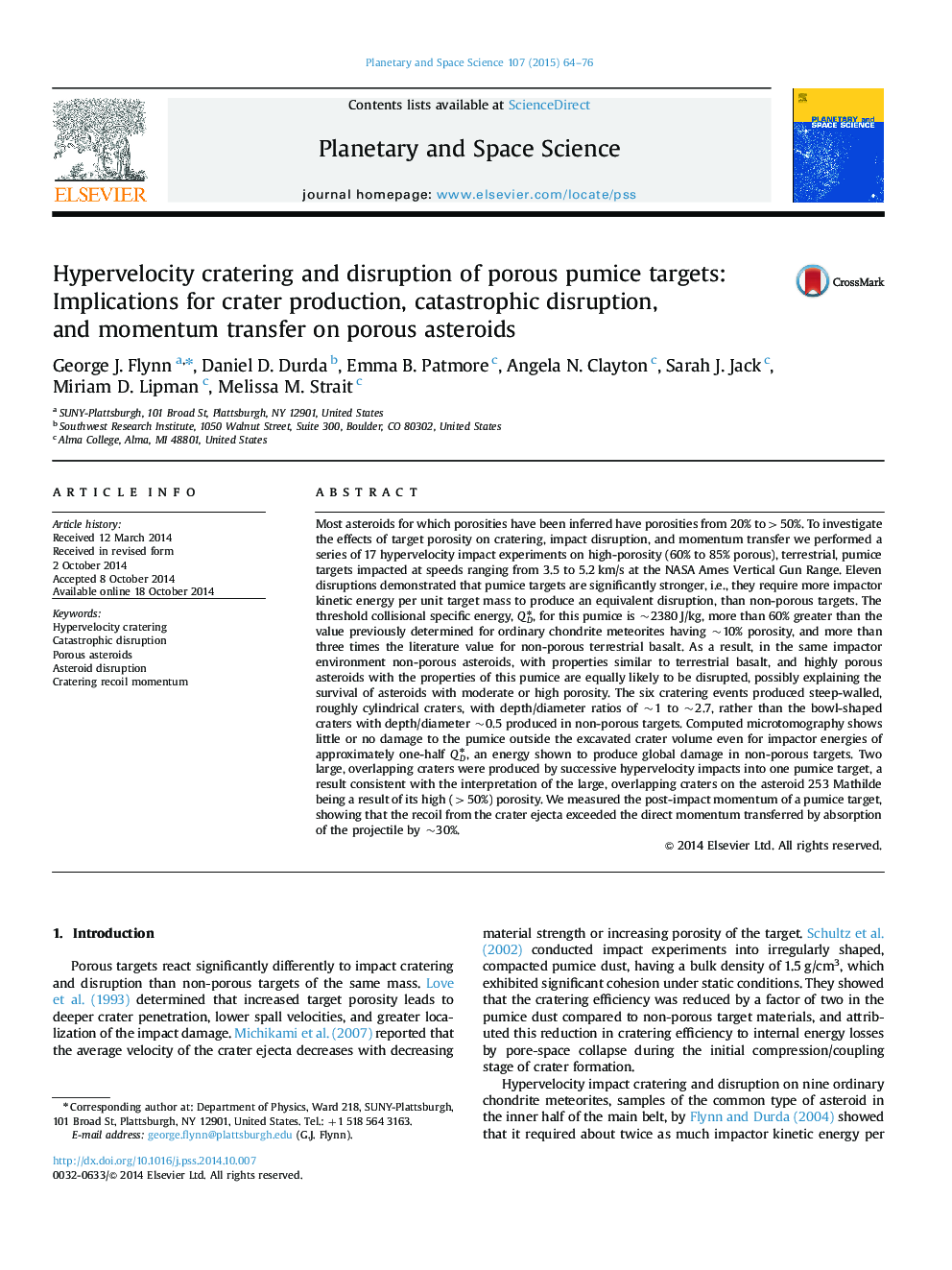| کد مقاله | کد نشریه | سال انتشار | مقاله انگلیسی | نسخه تمام متن |
|---|---|---|---|---|
| 1781007 | 1523931 | 2015 | 13 صفحه PDF | دانلود رایگان |

• The disruption probability decreases with increasing asteroid porosity.
• Craters in highly-porous targets are steep-walled rather than bowl shaped.
• Multiple, overlapping large craters can be produced in rigid, porous targets.
• Momentum transferred by crater ejecta is significant for highly-porous targets.
Most asteroids for which porosities have been inferred have porosities from 20% to>50%. To investigate the effects of target porosity on cratering, impact disruption, and momentum transfer we performed a series of 17 hypervelocity impact experiments on high-porosity (60% to 85% porous), terrestrial, pumice targets impacted at speeds ranging from 3.5 to 5.2 km/s at the NASA Ames Vertical Gun Range. Eleven disruptions demonstrated that pumice targets are significantly stronger, i.e., they require more impactor kinetic energy per unit target mass to produce an equivalent disruption, than non-porous targets. The threshold collisional specific energy, QD⁎, for this pumice is ~2380 J/kg, more than 60% greater than the value previously determined for ordinary chondrite meteorites having ~10% porosity, and more than three times the literature value for non-porous terrestrial basalt. As a result, in the same impactor environment non-porous asteroids, with properties similar to terrestrial basalt, and highly porous asteroids with the properties of this pumice are equally likely to be disrupted, possibly explaining the survival of asteroids with moderate or high porosity. The six cratering events produced steep-walled, roughly cylindrical craters, with depth/diameter ratios of ~1 to ~2.7, rather than the bowl-shaped craters with depth/diameter ~0.5 produced in non-porous targets. Computed microtomography shows little or no damage to the pumice outside the excavated crater volume even for impactor energies of approximately one-half QD⁎, an energy shown to produce global damage in non-porous targets. Two large, overlapping craters were produced by successive hypervelocity impacts into one pumice target, a result consistent with the interpretation of the large, overlapping craters on the asteroid 253 Mathilde being a result of its high (>50%) porosity. We measured the post-impact momentum of a pumice target, showing that the recoil from the crater ejecta exceeded the direct momentum transferred by absorption of the projectile by ~30%.
Journal: Planetary and Space Science - Volume 107, March 2015, Pages 64–76